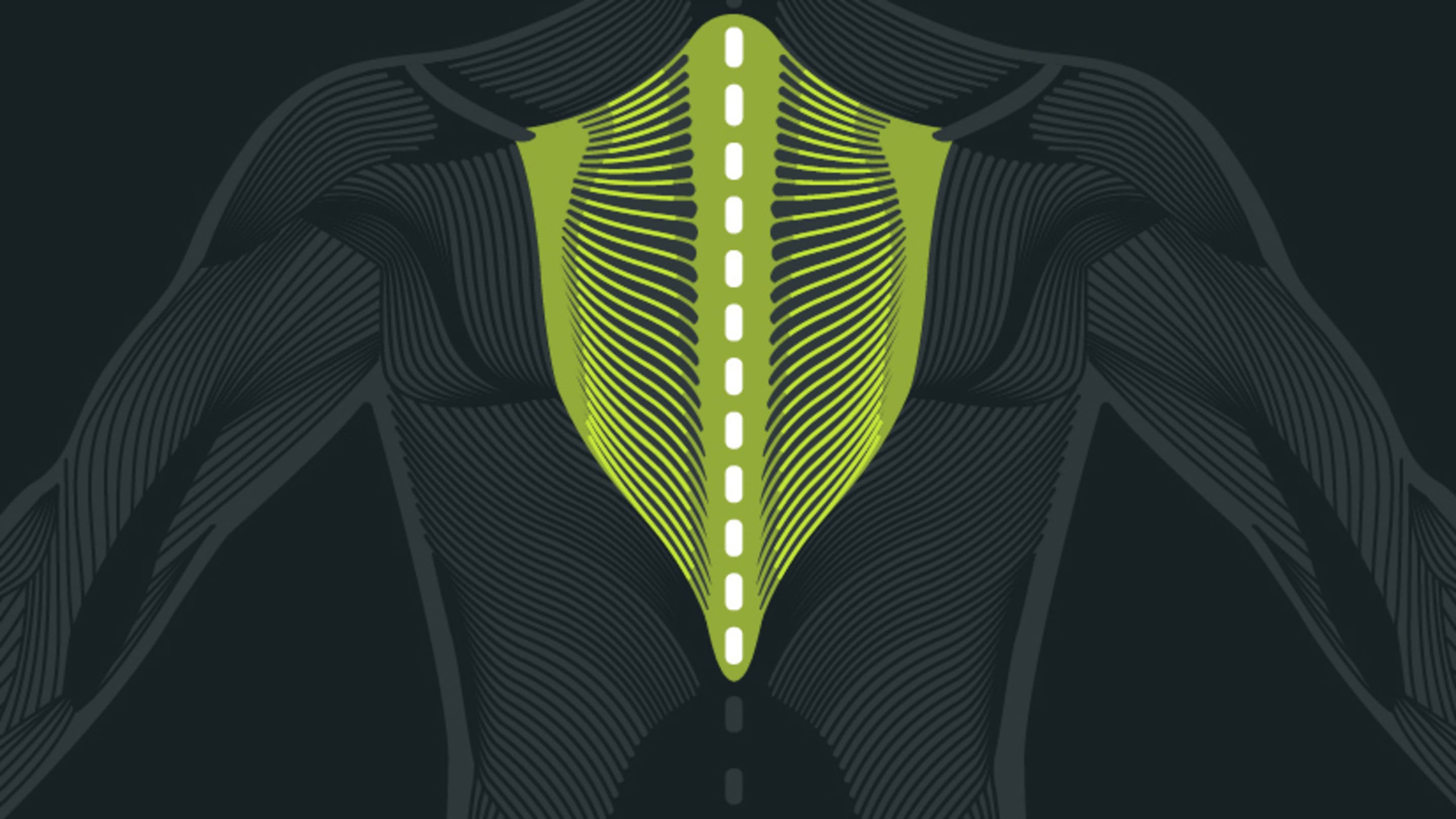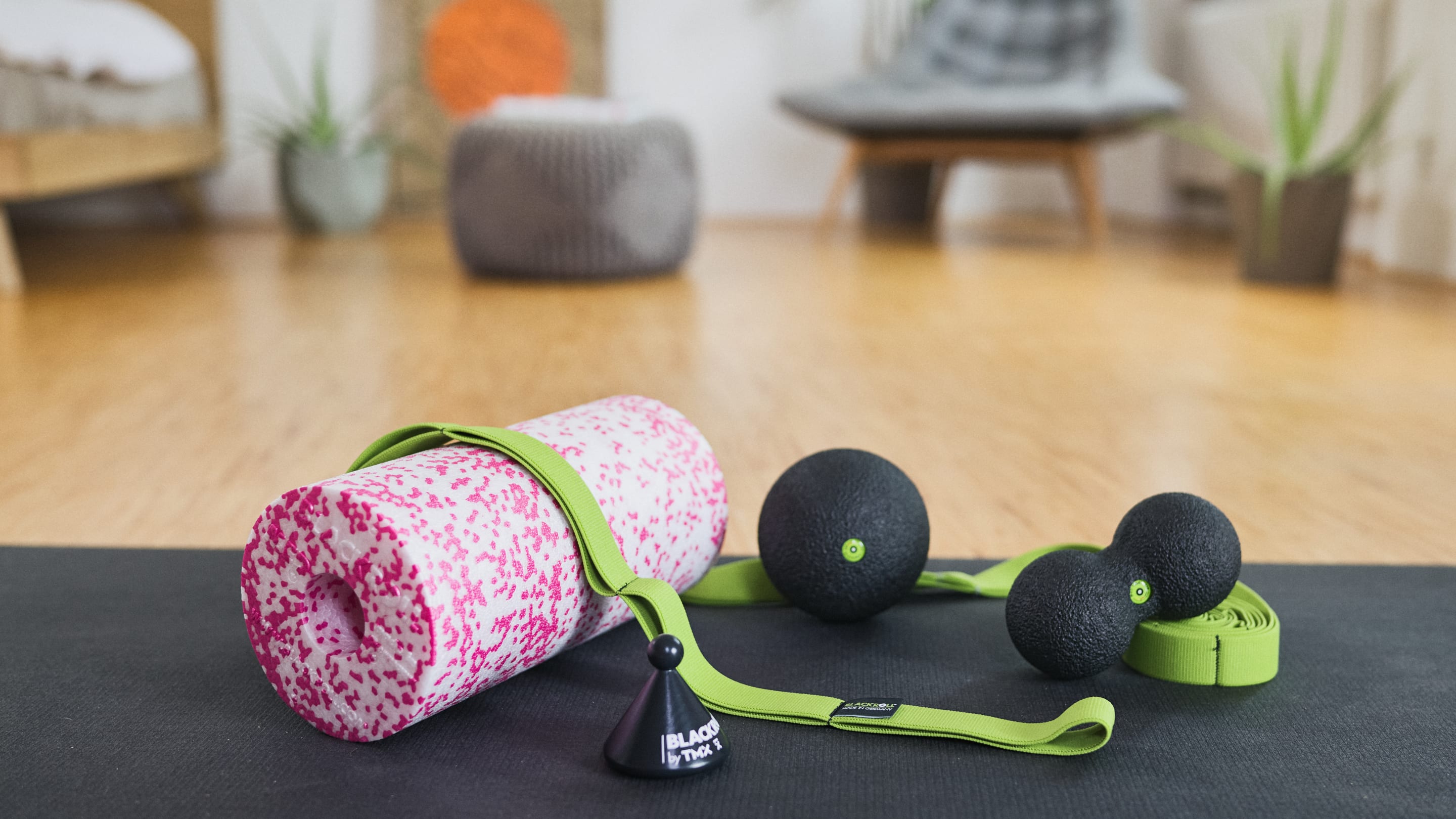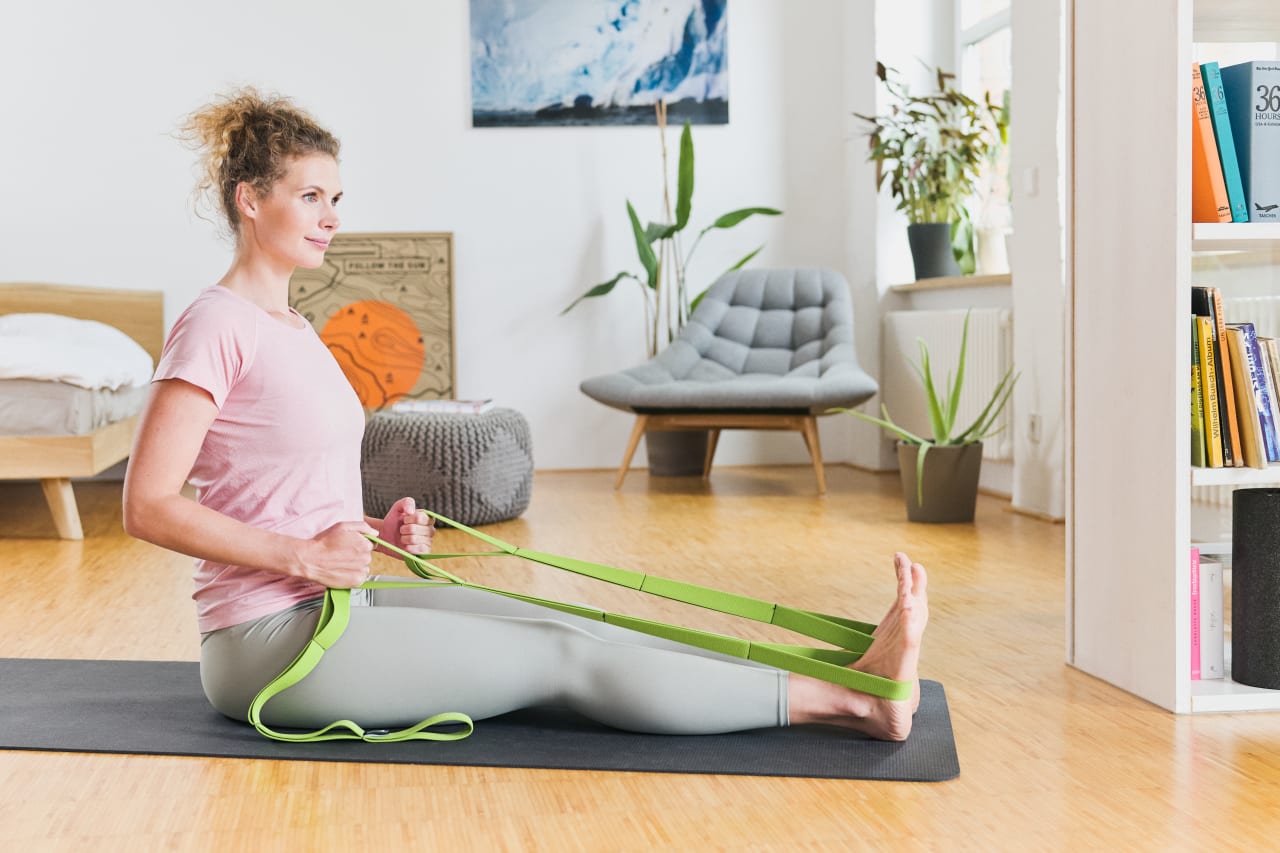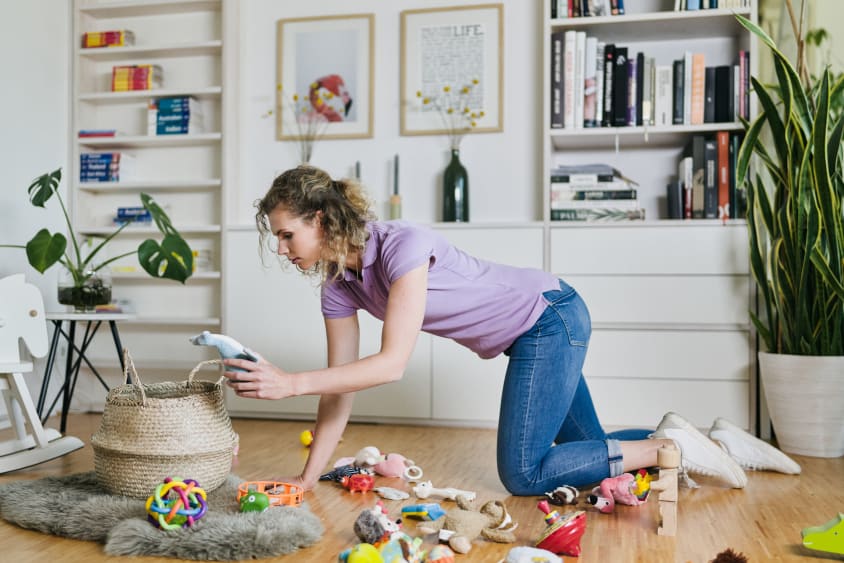
Thoracic spine syndrome - When your thoracic spine hurts.

Does this sound familiar? You probably spend a lot of time sitting at a desk for your job. In the mornings, everything is fine but as your day progresses, the muscle tightness around your thoracic spine gets worse. Sometimes, you don’t even know how you’ll make it through to home time, because the pulling feeling between your shoulder blades becomes unbearable. Now and then, you might even get neck pain and headaches from it. On weekends or on vacation, you feel so much better because you keep changing your position and are moving around a lot more.
We’re here to reveal how you can reduce pain in your thoracic spine.
01. What is thoracic spine syndrome?
The thoracic spine is made up of 12 vertebrae and sits between your neck bones and the bottom of your spine (between your cervical spine and lumbar spine). It starts at about shoulder level and extends to the bottom of your ribcage, down to the vertebra that attaches to your last rib. Thoracic spine syndrome is an umbrella term for different causes of pain found in this part of the body.
Compared to cervical and lumbar spine syndromes, thoracic spine syndrome is much rarer. Usually, it is down to functional causes and is harmless. Yet serious conditions are much more commonly linked with thoracic spine syndrome and pain in the middle back compared to cervical and lumbar spine syndromes. But don’t worry – we will tell you when it’s important to get a more precise diagnosis from your doctor.
02. What kinds of symptoms come with thoracic spine syndrome?
The symptoms of thoracic spine syndrome greatly depend on the cause. Usually, you’ll notice a dull, pressing pain on one shoulder blade or between your shoulder blades, which gets worse when you move your thoracic spine. When moving your upper body, your movements will often feel limited. Your posture might be bent, and/or you may feel discomfort in your neck.
Sometimes, thoracic spine syndrome will also come with radiating pain along the ribs or even chest pain. This gets worse if you breathe in deeply and you’ll start to get breathing difficulties. That’s why a lot of people fear they’re having a heart attack or angina (reduced blood supply to the heart). But both of these are much rarer than thoracic spine syndrome. So don’t start worrying too much, and consider these distinctive features:
If your pain mostly gets worse when you move your upper body, then it’s highly likely that you have thoracic spine syndrome, which is harmless. If your pain mostly gets worse with physical exertion, like when you climb stairs, then it becomes more likely that you could have a heart condition. In that case, it’s crucial that you see a doctor.
You should also visit a doctor if:
- You get thoracic spine pain for the first time when you’re under 20 years old or over 50
- You have pain that continues regardless of your body position or movements
- You have pain that gets continually worse
- You have pain that doesn’t get significantly better after two to four weeks
- You’ve had a recent accident (for example, a car accident or a fall)
- You’re feeling really unwell, possibly with fever and chills
- You lose weight without meaning to
- You’ve had cancer in the past
- You have osteoporosis
03. What causes thoracic spine syndrome?
The causes of thoracic spine syndrome can vary significantly. The most common reason is poor posture and not moving enough. Both of these are often caused by prolonged sitting at your desk with your back rounded, especially if your arms are stretched forward for things like computer work. But lifting heavy loads or carrying heavy backpacks when you’re not used to it can also contribute to thoracic spine syndrome. The result is usually muscle tension, which causes pain.
The three most common causes of thoracic spine syndrome are:
- Poor posture
- Not moving enough
- Excessive strain
Some much rarer causes can include:
- Blocking in your vertebra and/or rib joints
- Degenerative changes (to the spinal discs, vertebral/rib joints, ligaments)
- Thoracic spinal fracture owing to trauma
- Osteoporosis associated with a collapsed vertebra
- Misalignments of the spine, for example owing to Scheuermann’s disease or scoliosis
- Inflammatory or infectious disease
- Cancers
- Problems with the internal organs
04. What can you do to alleviate thoracic spine syndrome?
Usually, the pain caused by thoracic spine syndrome goes away on its own after a few days to a week. But you can influence how long this will take and how it will progress.
It’s especially important that you maintain good posture – when you’re standing, sitting or lying down. To help you, use the BLACKROLL® POSTURE trainer. It will help you to maintain good posture at all times when you’re standing and sitting. The BLACKROLL® RECOVERY PILLOW is there to support your posture while you sleep.
If you’ve already had poor posture for a long time and it has limited your thoracic spine movement, improve it by doing targeted exercises to stretch and increase your mobility, helping restore your myofascial balance. This will also have a positive effect on your posture and biomechanics.
Are you mostly free of pain? Then it’s time to train your upper body to avoid excessive strain. The most important area is your back muscles, and especially your middle back around your shoulder blades. Often, this also helps with the neck tension that comes with your other symptoms.
Has the discomfort in your thoracic spine improved as a result of the exercises? Great job – keep going! Supplement your training program with more exercises to achieve success. Download the BLACKROLL® APP and get even more motivated.
05. Tips for prevention
During your everyday life and at work, change your position and movements as often as you can. For example, you could use a height-adjustable or sit/stand desk and switch between sitting down and standing while you work. The linked exercises will, of course, help prevent problems too. Keep incorporating them into your exercise program so thoracic spine syndrome doesn’t occur in the first place.






